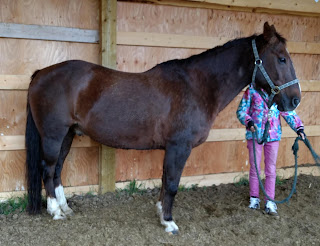 Ayna and Norman
Ayna and NormanNorman is not doing well for the last 2 years. He has Cushing's so his hair is not shedding out. I think his thermostat is not working as he doesn't sweat when hot.
His hind leg from when he hurt it years ago when he bolted and almost jumped a gate is bothering him a lot. He is on Previcox every day. A quarter. Miss July is on a quarter as well. It keeps him able to move.
 Ayna and Norman
Ayna and Norman
His hind leg from when he hurt it years ago when he bolted and almost jumped a gate is bothering him a lot. He is on Previcox every day. A quarter. Miss July is on a quarter as well. It keeps him able to move.
 Ayna and Norman
Ayna and NormanEver since I made the appointment at the vet's to have him put down Norman has been doing well. Before he was chasing Gus, biting and kicking him. Not that he could really kick as his hindleg wouldn't extend back. It is amazing to see what he is doing. Before when he chased or ran he ended up being on 3 legs. It was awful to see. If he slipped on ice or got into deep snow he would have been in big trouble. That is why the vet appointment to put him down.
It just shows it is all in the attitude, expectation of the person. It is in Norman to expect the other horses to move away from him (Gus being slow so got bitten) when he approached. It has nothing to do with size, strength, but all in attitude.
After acquiring Dave and Diamond I suspect Norman was a wildie. He has all their characteristics: head, ewe neck, great moving, smart, great sense of self-preservation, smart, can figure things out, incredibly athletic.
Norman. I have so many Norman stories. A great pony who I now suspect was born wild. he has many characteristics of Diamond and Dave and other wildies I have read about. he is ewe necked, with a big head. He has great movement, is very athletic, tough, game, never quits, .... all characteristics of wild horses that have been domesticated. I forgot to smart with good sense of self-preservation.
Norman is still kind to kids. He is an amazing horse (horse because Norman doesn't like being called a pony). He will be greatly missed forever. There can be no other Norman.
 Norman actually standing still in cross ties. He used to levade when in cross ties without a kid around to groom him
Norman actually standing still in cross ties. He used to levade when in cross ties without a kid around to groom him
































